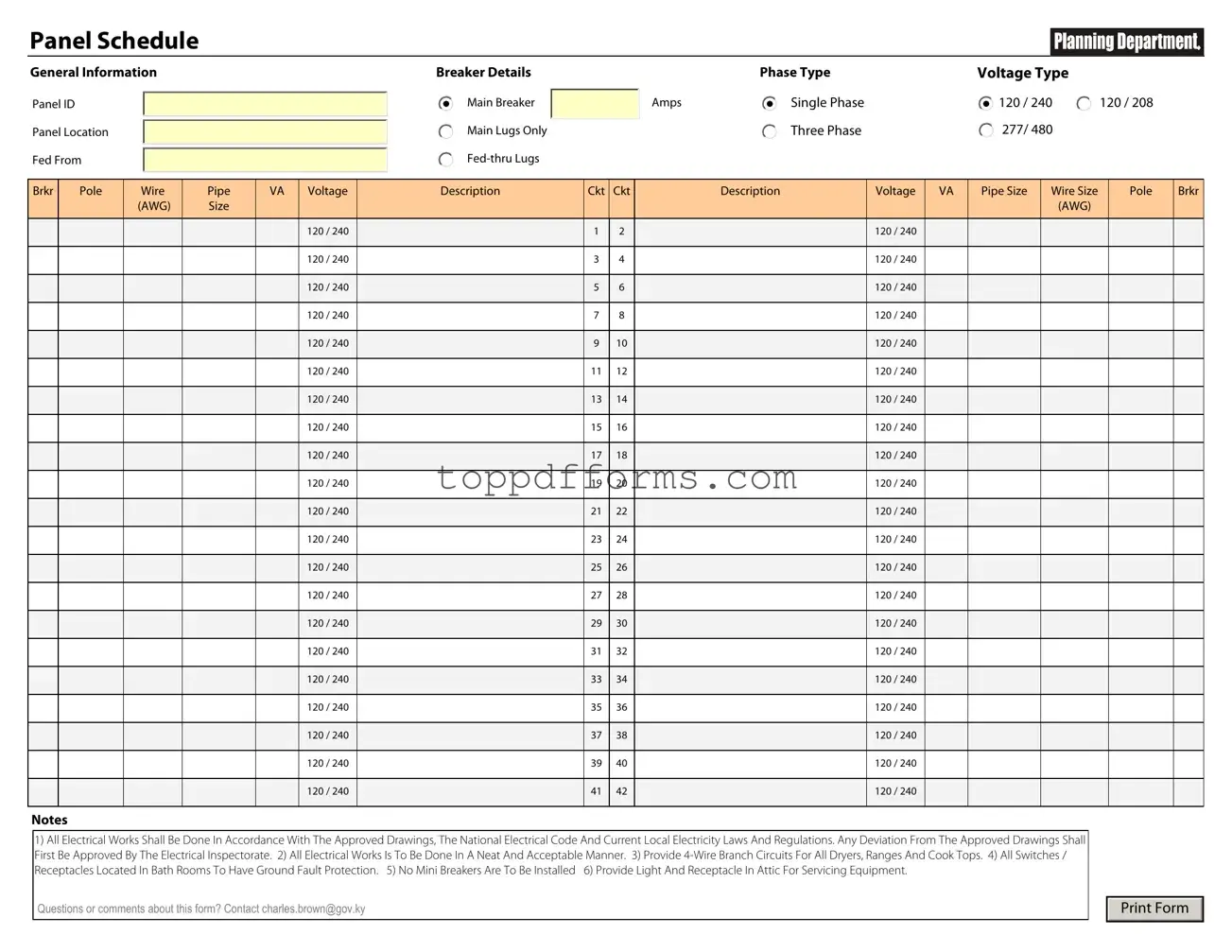What is an Electrical Panel Schedule form?
The Electrical Panel Schedule form is a crucial document used in electrical engineering and construction. It provides a detailed layout of the electrical panel, including the circuits it controls, their corresponding amperage ratings, and the devices connected to each circuit. This form serves as a roadmap for electricians and engineers, ensuring that the electrical system operates safely and efficiently.
Why is the Electrical Panel Schedule important?
This form is essential for several reasons. First, it helps in identifying the load distribution across different circuits, which is vital for preventing overloads. Second, it assists in troubleshooting electrical issues by providing a clear overview of the connections and circuit breakers. Lastly, having an accurate panel schedule is often a requirement for inspections and compliance with local electrical codes.
Who is responsible for creating the Electrical Panel Schedule?
How often should the Electrical Panel Schedule be updated?
The Electrical Panel Schedule should be updated whenever there are changes to the electrical system. This includes adding new circuits, removing existing ones, or changing the load on specific circuits. Regular updates help maintain safety and ensure that the schedule reflects the current state of the electrical system.
What information is typically included in an Electrical Panel Schedule?
An effective Electrical Panel Schedule includes several key pieces of information. This typically encompasses the circuit number, the amperage rating of each circuit breaker, a description of the load or device connected, and the location of the circuit within the building. Some schedules may also include notes on the type of circuit, such as whether it is a dedicated or general-purpose circuit.
Can the Electrical Panel Schedule be used for troubleshooting?
Yes, the Electrical Panel Schedule is an invaluable tool for troubleshooting electrical problems. When issues arise, electricians can refer to the schedule to identify which circuits are affected and trace the connections back to their sources. This organized approach helps expedite repairs and minimizes downtime.
What should I do if I notice discrepancies in the Electrical Panel Schedule?
If discrepancies are found in the Electrical Panel Schedule, it is crucial to address them immediately. Notify the responsible electrician or engineer to investigate and correct any errors. Keeping the schedule accurate is vital for safety and compliance, and prompt action can prevent potential hazards.
